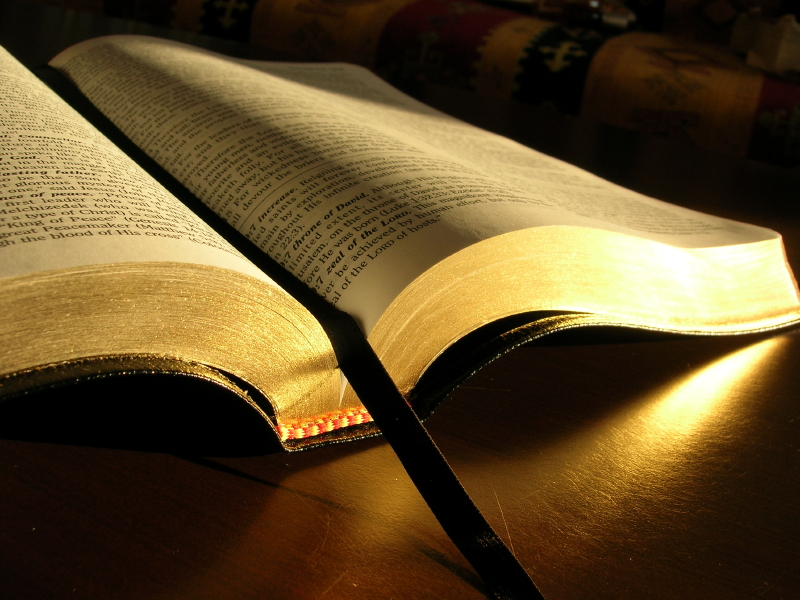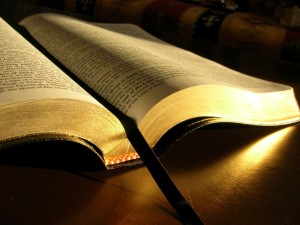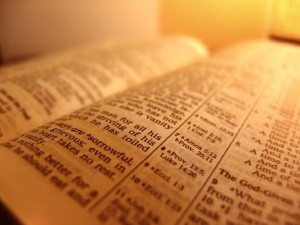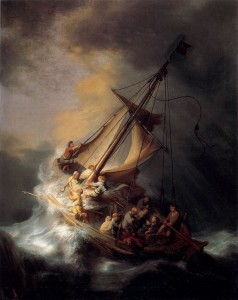The Coming Battle of Gog & Magog
by Rick Shrader

Recently I overheard someone talk about the good old days of prophecy conferences when we used to fear Russia and communism. Aren’t we even closer to the Lord’s return today than we were back then? I have often said myself how those preachers from a generation ago could not have conceived a world like we live in today. Israel, as a nation, has never been in such dire straits as it is today; never has east and west been at such tension as it is today; never has there been the real possibility of total annihilation of large cities and small countries; and, sadly, never has America’s strength in the world been doubted as it is today. The nations to the south, north, and east of Israel have never put forth the kind of pressure that is applied today and seldom with the same vitriol.
It also appears certain that a conflict of some kind is coming with those nations, especially to the north of Israel, because of their threat, not just to Israel, but to western nations as well. While we have learned (sometimes the hard way) not to be date setters or prognosticators of political circumstances, we have also learned not to reject prophecy because the circumstances don’t seem to work out the way we want. There are no “signs” of the rapture, and the tribulation will come upon the world as a thief who comes unexpected. But that should not keep us from preaching prophecy and expecting the Lord to come at any moment. Even the most conservative prophecy preachers knew that sometime the stage would be set for the scene to begin. Even if it doesn’t this time, it will sometime.
With the Islamic extremists spreading their terror around the world, and their obvious intention to wipe Israel off the map, and their boldness in attacking Christian-based countries, it seems we are headed for a world-wide conflict with Islamic terrorists. As I write, King Abdullah of Saudi Arabia has just died, and Yemen’s president Abd-rabbu Mansour Hadi has resigned. The absence of these two “friendly” leaders leaves Israel surrounded by even greater potential threats. There is no way of knowing in any definite way that such a conflict will be what the Bible predicts of the tribulation time and it would be foolish to preach it as such. Yet one of these times the stage will be set as God alone knows and wants, the rapture will occur, the antichristian king of the west will sign a treaty to protect Israel, and the tribulation will begin, and kings of the east, west, north, and south will begin making their moves on the chess board of the world.
These things will happen some day. If I lived in the 1930s I would surely have thought that this scenario was imminent. But it wasn’t. In the 1970s, every time Henry Kissinger (a German-born Jew representing western American interests) left for Israel, we pretribulationalists began getting ready for the rapture. But that wasn’t it either. And what we see today may or may not be the setting for the tribulation that only God knows and will cause to happen. We may go another hundred years. But then, it could happen now as I am writing or as you are reading. One thing is for sure, we’re closer to it now than we’ve ever been.
So let’s review one of those great prophecies of the tribulation period, not making any predictions, but simply realizing that one day these things will happen and, yes, it could be soon.
The overall picture
A time of tribulation is coming that will last seven years. This is the seventieth week of Daniel’s prophecy (Dan. 9:24-27) and is divided into two halves of three and a half years each (see Rev. 11:1-3 for the designations of “forty two months,” and “a thoussand two hundred and threescore days,” in addition to “time, and times, and half a time” in 12:14). The tribulation officially begins when a treaty is signed by the antichrist with Israel (Dan. 9:27, called the “covenant with death” and “agreement with hell” in Isa. 28:18). The antichrist will rise to power during the first half of this time as the rider on the white horse of Rev. 6:2, going forth “conquering and to conquer.” In the middle of the tribulation he will break his treaty and desecrate the sacrifices in Jerusalem (2 Thes. 2:4). This is called “the abomination of desolation” by Jesus (Matt. 24:15, also Dan. 12:11). The second half of the tribulation (“great Tribulation,” Matt. 24:21) will bring great wrath upon those left alive.
The whole conflict will end at Armageddon (Rev. 16:16). Some emphasize the final conflict in the valley of Megiddo, and some emphasize a whole war lasting the entire three and a half years. Ryrie says, “Probably both emphases are valid, for there will be several battles encompassing more than just the local area of Megiddo that precede the final and climactic battle at Megiddo.”1 One of those battles is called “Gog and Magog” and is described in detail in Ezekiel 38 and 39. This is not the final battle often called the battle of Armageddon, but a previous battle that sets the stage for the final conflict.
The geographical participants
In the whole campaign of Armageddon there are essentially four main participants, five if you include the Lord from heaven Who is the final Victor after the last battle. These four earthly participants are easily designated as the kings of the east, west, north, and south. The kings of the east, who come late in the campaign, are described as a great hoard of 200 million (Rev. 16:12, 9:16). The kings of the south and north are mentioned by Daniel (11:40), not to be confused with the contemporaries of Daniel described in 11:5-35. The king of the west is the antichrist, the “prince that shall come” (Dan. 9:26) of Daniel’s vision, the one who breaks the covenant in the middle of the 70th week.
The battle of Gog and Magog concerns the king of the north and his invasion into the land of Israel early in the campaign. This king is described in Dan. 11:36-45 as “the king of the north;” in Isaiah 10:5, 30:31, and 31:8 as “the Assyrian;” in Joel 2:20 as “the northern army;” and in Ezek. 38:2 as “Gog, of the land of Magog” (NKJV). This battle will be the first major conflict affecting Israel in the tribulation, and, with the defeat of the northern king, will allow the king of the west to become the primary power in the war.
The time of the battle
There are varying views as to when the battle of Gog and Magog takes place. Some put the battle before the rapture so that it would be a current event even for the church; some put it in the millennium when Jesus returns to the earth; but most put it within the seven year tribulation. Of those, the two major views are that this battle is essentially Armageddon, or that it happens at or near the middle of the week and is the catalyst for the next three and a half year campaign. I think the latter is the preferred view.
That the battle of Gog and Magog takes place at the middle of the tribulation makes sense for a number of reasons. Daniel’s vision of this northern invasion in Dan. 11:40-45 is followed in 12:1, “And at that time shall Michael stand up, the great prince which standeth for the children of thy people; and there shall be a time of trouble, such as never was since there was a nation even to the same time; and at that time thy people shall be delivered, every one that shall be found written in the book.” This defense of Israel by Michael is described again in Rev. 12:7 immediately following the mention of the 1260 days in verse 6. This places Michael’s action at the middle of the tribulation, and therefore, places Daniel’s northern invasion “at that time.”
Dwight Pentecost lists ten reasons why he believes the battle takes place at or near the middle of the tribulation.2 Included in these is that Israel is still dwelling in peace when the invasion takes place; that Satan is cast out of heaven at this time and leads the northern army against Israel; and that the defeat of the northern army allows the antichrist to turn against Israel, breaking the covenant and desecrating the temple sacrifices. In addition, the time it takes to clean up after this battle (7 years to burn the weaponry, and 7 months to bury the dead, Ezek. 38:8-16) fits this time better than at the end of the tribulation.
Gog and his allies
Ezekiel gives a list of allies who will participate with the king of the north in the invasion of Israel at the middle of the tribulation. First, Gog is described, “Son of man, set your face against Gog, of the land of Magog, the prince of Rosh, Meshech, and Tubal, and prophesy against them” (Ez. 38:2, NKJV). Here, we are told that Gog (most likely a title meaning chief or head) is the head over the lands of Rosh, Meshech, and Tubal. Then in verses 5-6 we are given the names of five allies that join with Gog, “Persia, Ethiopia, and Libya are with them, all of them with shield and helmet; Gomer and all its troops; the house of Togarmah from the far north and all its troops—many people are with you” (Ez. 38:5-6, NKJV)
There is considerable discussion over the identity of these places. This is important because these names may identify nations that exist today and are ready to participate in the destruction of Israel. Older prophetic writers (simply early or mid 20th century) commonly identified Rosh as Russia and Meshech and Tubal as cities of Russia (Moscow and Tobolsk).3 They quote Josephus, Jerome, and later Gesenius, as well as the New Schaff-Herzog Encyclopedia of Religious Knowledge as sources. Therefore, these identities cannot be dismissed out of hand. But more recent writers have questioned the connections, especially based on linguistic-sounding names. Others caution reading modern names into the text which, 2500 years ago, may not have known today’s nations at all. Even by 1969, Charles Feinberg wrote, “It is not worthy of the prophecy to make identifications merely on the basis of similarity of sounds. . . There have been many writers who connected the name Rosh with the Russians, but this is not generally accepted today.”4 I would say that such may be the case, but we must remember that God was not bound to time, and He wrote what would take place in our day or yet in our future, and we shouldn’t rule out such an eventual result. In addition, it is not really “reading into a text” to try to fit the prophecy with current events. There is nothing wrong with asking if the stage could be set for end-time events. That is not to say that this is absolutely what Ezekiel saw, but only that perhaps it could be what he saw. The mention of the “far north” (38:6, 15, 39:2) also shows that Gog comes from a land, not just north of Israel, but far north. This leaves quite a wide berth of possible fulfillment as to the land of Magog.
The other five associates of Gog mentioned in verses five and six have also undergone much scrutiny. I would suggest Ryrie’s conclusion written in 1999, for the general identity of all the associates.
“The countries of that northern coalition are listed in Ezekiel 38:2-6; they include the territory of Magog, which will be ruled by Gog and was identified by Josephus as the land of the Scythians, the region north and northeast of the Black Sea and east of the Caspian Sea. Today, these are the countries of the Commonwealth of Independent States including Russia, Ukraine, and Kazakhstan and perhaps some of the smaller states of the commonwealth. Meshech and Tubal includes the area of modern Turkey. Persia is modern Iran; Ethiopia, northern Sudan; Put, Libya; Gomer, probably the eastern part of Turkey and Ukraine; Beth-togarmah, the part of Turkey near the Syrian border. Many, but not all of these nations, now have large Muslim populations.”5
What is important for us today is Ryrie’s last sentence. The radical Muslims today are surrounding Israel and would gladly join in such a confederation for this common cause. Renald Showers has also written, “It should be noted that the present government of Turkey is being threatened by Islamic fundamentalists. As a result, some leaders fear that Turkey could become another Iran. If that happens, then all the nations named in Ezekiel 38:5-6 will be characterized by a militant Islamic hatred of Israel.”6 Showers, writing in 1996, did not see the events of the last few years as Turkey has pulled away from western alliances and become more friendly toward the extremists.
Thus, if the rapture were to happen today, this battle of Gog and Magog would be a short three and a half years away. The lands described in Ezekiel easily describe the countries surrounding Israel and that have common cause for Israel’s destruction. Regardless of the ancient or modern names, the land never changes, and neither do God’s purposes.
The result of the battle
The invading armies from the north come into a land that is dwelling in “unwalled villages” and “at rest” and that “dwell safely” (38:11). This is because Israel is protected by the western king’s treaty. But Gog has had enough, and with her allies she believes she can plunder and destroy without intervention from the west. It is at this point that God miraculously intervenes. Ezekiel 38:18-23 describes the northern armies being destroyed on the mountains of Israel in such a way that the world takes notice and fears. Showers describes it,
“He will then actively intervene to destroy the massive invading force through a fierce earthquake, landslides, self-destructive panic, pestilence, excessive rain, great hailstones, and fire and brimstone (38:19-22). The destruction of the invading army will be so extensive that the mountains and open fields of Israel and a valley near the Dead Sea will be congested with corpses. God will bring fowl and beasts to eat many of them. It will take all the Jews seven months to bury the rest of the dead and seven years to destroy their weapons (39:3-5, 9-20). If this invasion takes place shortly before the middle of the Tribulation, then this destruction of weapons will continue into the early part of the Millennium.”7
In addition to God’s miraculous intervention to save His people Israel from human destruction, 38:21 says, “And I will call for a sword against him throughout all my mountains.” Some believe this “sword” is God’s use of the antichrist, the western king, who also comes to defend his treaty. Once the king of the north is destroyed, however, the western king has no need of such a treaty and turns against Israel and rises to world dominance. This we know will be true of the antichrist.
And So . . .
A showdown is coming between the west and the Islamic terrorists countries surrounding Israel. The tension continues to build around the world as violent attacks against the west continue to escalate. The situation we see today may or may not be the precursor to the great battle of Gog and Magog that Ezekiel describes, but one day this scenario will happen. Nothing must take place for the rapture to occur, and if it were to happen today, these events would immediately begin to align as the tribulation would begin.
“And that, knowing the time, that now it is high time to awake out of sleep, for now is our salvation nearer than when we believed. The night is far spent, the day is at hand: let us therefore cast off the works of darkness, and let us put on the armor of light” (Romans 13:11-12).
Notes:
- Charles Ryrie, “The Campaign of Armageddon,” Countdown to Armageddon, various contributors (Eugene: Harvest House, 1999) 198.
- J. Dwight Pentecost, Things To Come (Grand Rapids: Zondervan, 1969) 350-355.
- See Pentecost, Things To Come, pp. 326-331; John Walvoord, The Nations, Israel and the Church in Prophecy (Grand Rapids: Zondervan, 1967) 105-108; Leon J. Wood, The bible & Future Events (Grand Rapids: Zondervan, 1973) 122.
- Charles L. Feinberg, The Prophecy of Ezekiel (Chicago: Moody Press, 1969) 219-220.
- Ryrie, 199.
- Renald E. Showers, “Gog and Magog,” Dictionary of Premillennial Theology, Mal Couch, ed. (Grand Rapids: Kregel, 1996) 124.
- Showers, 125.












 This is Peter Slobodian’s biography,
This is Peter Slobodian’s biography, 





